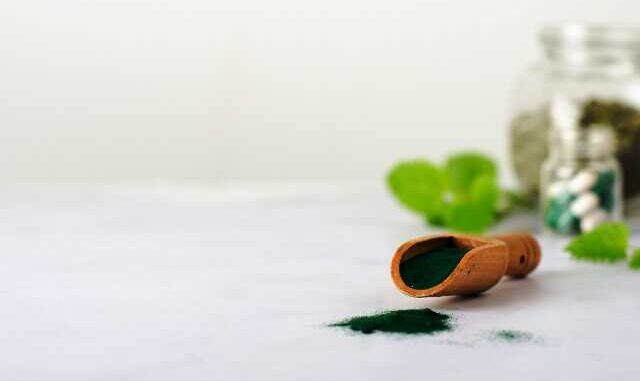
Last Updated on August 15, 2024 by admin
In Ayurveda, the concept of Avarana refers to the obstruction or covering that blocks the normal functioning of the body’s natural energies, known as Doshas (Vata, Pitta, and Kapha), and the body’s channels (Srotas).
Imagine your body has pathways (like roads) that allow the flow of vital energies and substances, like blood, nutrients, and waste. When these pathways are clear, everything runs smoothly, and your body stays in balance. However, sometimes these pathways get blocked or covered (like a traffic jam), which disrupts the flow and causes various health problems. This blockage or covering is called Avarana.
For example, if Vata (the energy that controls movement) is obstructed by Kapha (the energy related to structure and lubrication), it might lead to symptoms like stiffness or bloating. The treatment in Ayurveda involves identifying and removing the obstruction to restore balance in the body.
So, Avarana is essentially about understanding where and how blockages happen in the body and working to remove them to maintain health.
Here are a few examples of diseases where Avarana is observed:
- Hypertension (High Blood Pressure):
- Avarana of Vata by Pitta or Kapha: When Vata Dosha is obstructed by Kapha or Pitta in the blood vessels, it can lead to increased pressure, resulting in hypertension. This is because the natural movement of Vata (which governs circulation) is hindered.
- Diabetes Mellitus:
- Avarana of Vata by Kapha: In diabetes, the natural function of Vata Dosha is obstructed by an excess of Kapha. This obstruction can interfere with the body’s ability to metabolize sugars properly, leading to elevated blood glucose levels.
- Joint Pain (Arthritis):
- Avarana of Vata by Kapha: In conditions like osteoarthritis, the natural movement of Vata within the joints can be obstructed by Kapha (which represents the fluid and structural elements), leading to stiffness, pain, and restricted movement.
- Cardiac Diseases:
- Avarana of Vyana Vata by Kapha: In some heart conditions, the normal function of Vyana Vata (responsible for the circulation of blood) is obstructed by Kapha, leading to issues like atherosclerosis, where the arteries become clogged and less flexible.
- Obesity:
- Avarana of Vata by Meda (Fat Tissue): In obesity, Vata’s normal movement is obstructed by excessive Meda Dhatu (fat tissue), leading to reduced metabolism, weight gain, and other related health issues.
- Constipation:
- Avarana of Vata by Kapha or Pitta: When the natural movement of Vata is obstructed in the digestive tract by Kapha or Pitta, it can result in constipation due to the lack of proper bowel movement.
These examples illustrate how the concept of Avarana can be applied to understand the underlying causes of various diseases in Ayurvedic medicine. Treatment often focuses on removing the obstruction to restore balance and health.
How to get rid of avarana?
Getting rid of Avarana in Ayurveda involves clearing the obstruction that is blocking the natural flow of the Doshas (Vata, Pitta, Kapha) or the body’s channels (Srotas). The approach to treatment depends on the specific Dosha involved and the nature of the obstruction. Here are some general methods used to remove Avarana:
1. Identify the Cause of Avarana
- The first step is to diagnose which Dosha is being obstructed and which Dosha or factor is causing the obstruction. This is usually done through a detailed examination by an Ayurvedic practitioner.
2. Panchakarma Therapy
- Panchakarma is a set of five cleansing and detoxification procedures designed to remove toxins and clear obstructions in the body’s channels. These include:
- Vamana (Emesis): Induced vomiting to clear Kapha-related obstructions.
- Virechana (Purgation): Laxatives are used to clear Pitta-related obstructions in the digestive tract.
- Basti (Medicated Enema): This is particularly effective for Vata-related Avarana, helping to clear obstructions in the colon and other areas.
- Nasya (Nasal Administration): Herbal oils or powders are administered through the nose to clear obstructions in the head and neck region.
- Raktamokshana (Bloodletting): Used to remove toxins from the blood, especially in cases of Pitta-related Avarana.
3. Herbal Remedies
- Specific herbs and formulations are used to balance the Doshas and clear obstructions:
- Triphala: A combination of three fruits used to cleanse the digestive system and remove blockages.
- Guggulu: Known for its anti-inflammatory properties, Guggulu helps in clearing Vata and Kapha obstructions.
- Pippali (Long Pepper): Helps in clearing Kapha and improving digestion, often used to break down Avarana in the digestive system.
- Punarnava: This herb is known for reducing swelling and clearing water retention, useful in Kapha-related Avarana.
4. Dietary Adjustments
- Following a diet that balances the aggravated Dosha can help in clearing Avarana:
- For Kapha Avarana: Eat light, warm, and spicy foods to reduce Kapha and clear blockages.
- For Pitta Avarana: Favor cool, sweet, and bitter foods to reduce Pitta and clear heat-related obstructions.
- For Vata Avarana: Eat warm, oily, and grounding foods to soothe Vata and clear dryness and blockages.
5. Lifestyle Changes
- Adopting daily routines and habits that support the balance of the Doshas is crucial:
- Regular Exercise: Helps in clearing Kapha-related Avarana, improving circulation, and preventing stagnation.
- Yoga and Pranayama: Specific postures and breathing exercises can help in clearing blockages and improving the flow of energy.
- Abhyanga (Oil Massage): Regular oil massage with appropriate herbal oils helps in clearing Vata-related Avarana, especially in the joints and muscles.
6. Stress Management
- Since mental stress can also cause Avarana, practices like meditation, mindfulness, and adequate rest are important to keep the mind and body in balance.
7. Regular Detoxification
- Periodic detoxification using herbal teas, light fasting, or other Ayurvedic practices can help prevent the accumulation of toxins and blockages in the body.
By combining these approaches, Ayurveda aims to restore the natural flow of the Doshas, clear obstructions, and bring the body back into balance.

Leave a Reply